Doctor Leslie Pantin Zoo
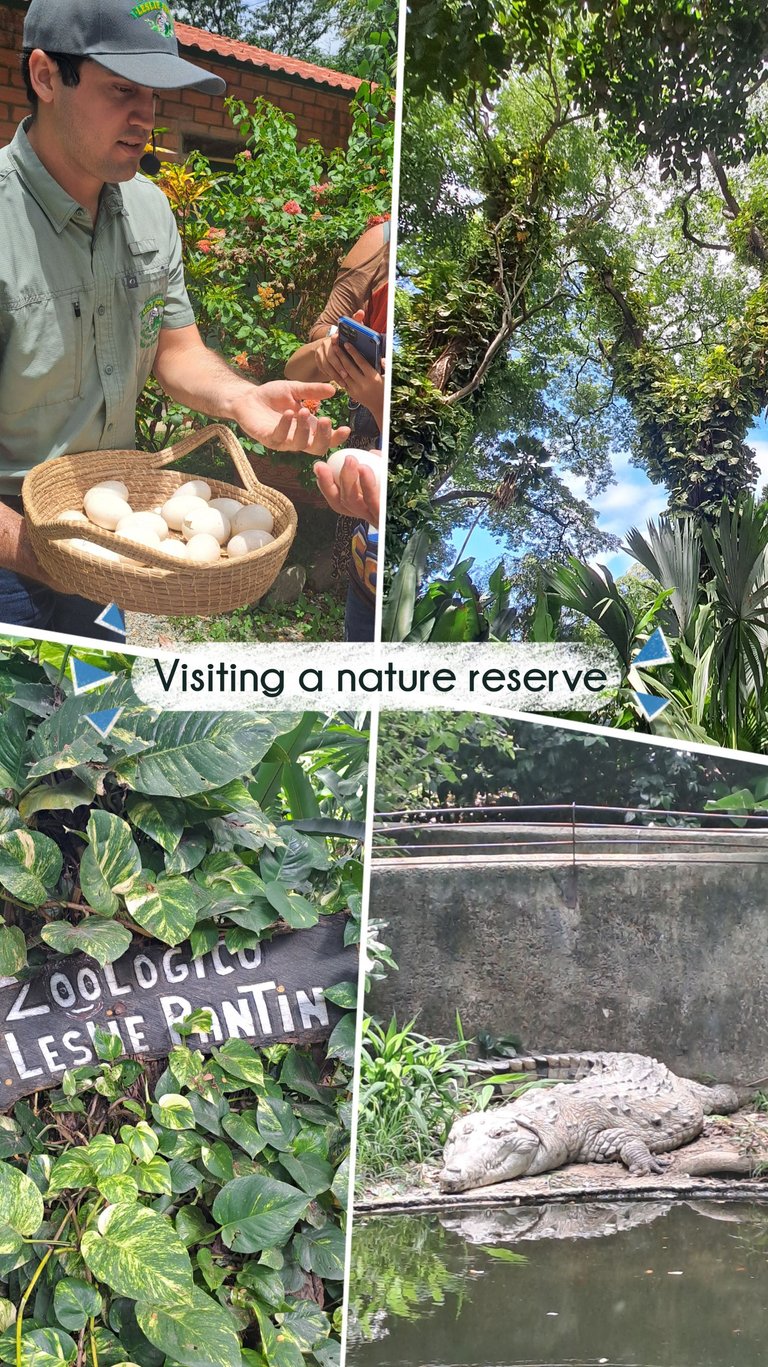
Last month I had a very special outing. I visited a nature reserve for the first time, which is not the same as a zoo, terms that I learned to differentiate that same day, as I will explain later. It all started with a TikTok video that my mother saw a few weeks ago. My mom, who is on that social network and I am not, showed me this place on her cell phone. The video showed exotic animals, and best of all, it was very close to where we live. We were both amazed and couldn't believe that something like this existed in the neighboring municipality. I saved the information and promised myself I would go see it this year. But a few days later, I saw another ad on my Instagram, mentioning that May 22 was International Biodiversity Day and that my country, Venezuela, ranks seventh among the most megadiverse countries. For this reason, tickets were almost half price. I couldn't resist this promotion and decided to go with my aunt and brother to visit the Doctor Leslie Pantin Zoo.
This zoo and nature reserve is only open to the public on Sundays because they offer a guided tour that lasts approximately three hours. However, since it was a special date, they would be open on Saturday from 10 a.m. to 1 p.m. for the guided tour. After that, people can have lunch or eat the food and snacks they bring or buy there for as long as they want. There are several areas with benches to enjoy and rest from the walk, and the trees and the sounds of the leaves and animals make you feel completely relaxed and connected to the environment. It is a pleasure for the senses, whether your eyes are closed or open.
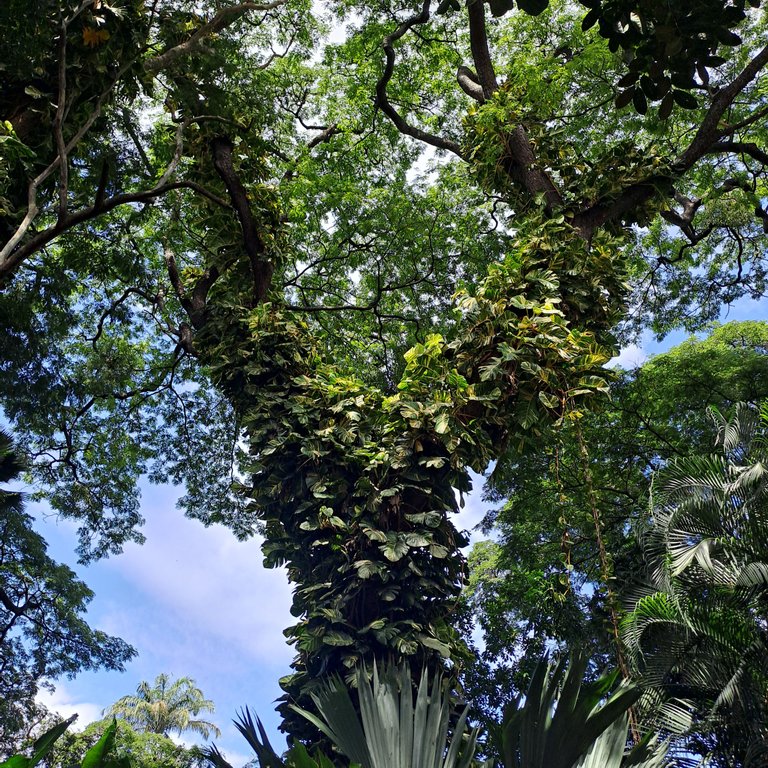
Zoo or nature reserve?
Zoos are places where various animals are kept in captivity for exhibition for the purpose of entertaining humans. During my childhood and adolescence, visiting zoos in my country left me with a bad taste in my mouth. I ended up feeling very sad, even depressed for weeks, determined never to return. Now, as an adult, I have had the opportunity to visit zoos in other countries, such as Peru, Mexico, and Colombia, and those left me with better memories and emotions. In zoos, animals do not have the infrastructure to be happy, but in nature reserves it is different.
The animals in a nature reserve are there because their existence is in some way endangered, and the purpose of this place is to protect the ecosystem, conserve natural life, and study each of the species in their natural environment or those that live there. It also educates the population and raises awareness of the value of these animals for nature and the ecosystem—in other words, for ourselves.
In conclusion, a zoo is where animals are exhibited in captivity for recreation, and a nature reserve is a protected area where animals can thrive in their natural habitat for study, preservation, and social awareness.
The Leslie Pantin Zoo is named after her because, in addition to being a natural reserve, it is also a zoo for native Venezuelan fauna, with some specimens living in the best conditions for their species. It accepts rescued animals brought in by state security agencies and also by people who understand that wild animals are not meant to be kept at home or domesticated.
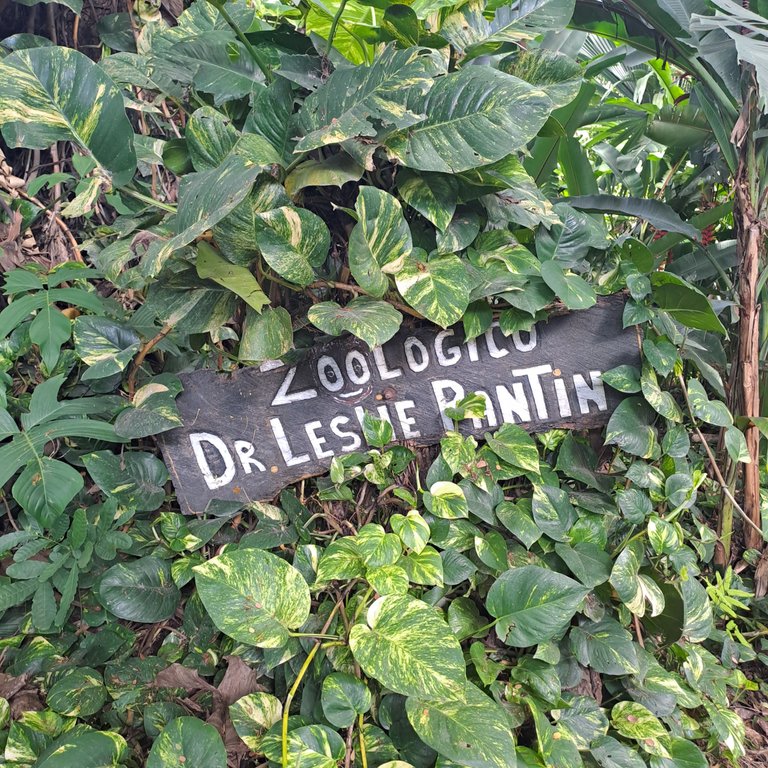
Location
I live in central Venezuela, in the state of Aragua, in Cagua in the municipality of Sucre, with a tropical climate and an average temperature of 26 to 32 degrees Celsius. In my municipality, there are many places of natural interest. The reserve is an hour away by public transportation from where I live, as I had to take only two buses to get there. The first one is one block from my house, and the second one dropped me off in front of the nature reserve, specifically in the municipality of Mariño, in Turmero via Paya. Getting there is very easy, both by public transportation and by private vehicle.
Origin of the nature reserve
It was built on what was originally a farm or country house belonging to the Pantin family, founded in 1963 by the late veterinarian Dr. Leslie Pantin, who was a lover of Venezuelan flora and fauna. Today, the reserve is run by his son, daughter-in-law, and grandchildren, all of whom are veterinarians and biologists.
Admission price
To visit this nature reserve, you must make a reservation in advance, as there is a limit on the number of visitors for the guided tour. They are open every Sunday and occasionally on Saturdays.
The tour runs from 10:00 a.m. to approximately 1:00 p.m. (only one tour per day). Admission prices are as follows:
- $10 for adults
- $8 children (4 to 12 years old)
- $8 adults over 65 Children under 4 years old are free.
As I mentioned earlier, I took advantage of a promotion and paid for two adult tickets at $6 each, for a total of $12, and my aunt, who is a special girl with Down syndrome, didn't have to pay 🥳 and got in for free. In Venezuela, people with disabilities don't have to pay for tickets to parks or recreational and entertainment venues.
The ticket included:
- Guided tour, approximately 3.5 hours long.
- Hydration for the entire tour.
- Food (carrots, squash, bananas, or carrots) to feed the animals of the plains ecosystem.
- Private parking.
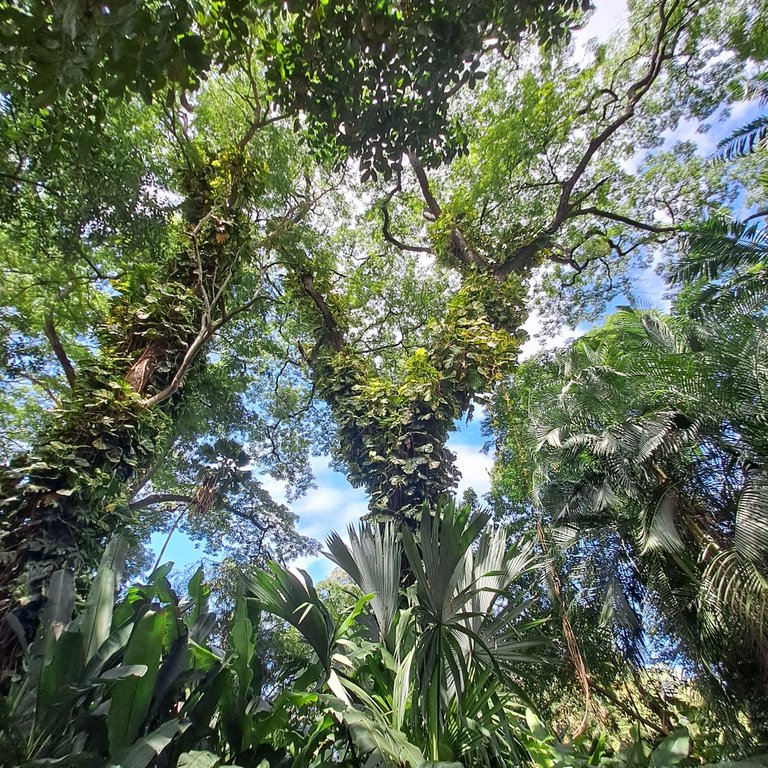
Arrival at the zoo and first impressions
The name of the zoo is neither big nor flashy; on the contrary, it is small and practically hidden among the vines. The letters that form its name can be glimpsed on a simple wooden board.
Upon entering, the nature that seemed ordinary from the outside surprised me and left me speechless, with a huge tree beautifully covered with a vine that, like the tree itself, had grown impressively. The photos and short video I took do not do justice to its majesty.
A few meters away was a small house, the souvenir shop where you can buy various clothing items such as printed T-shirts, caps, hats, scarves, and other items such as mugs, notebooks, key chains, toys, and decorations with images alluding to the animals in the reserve.
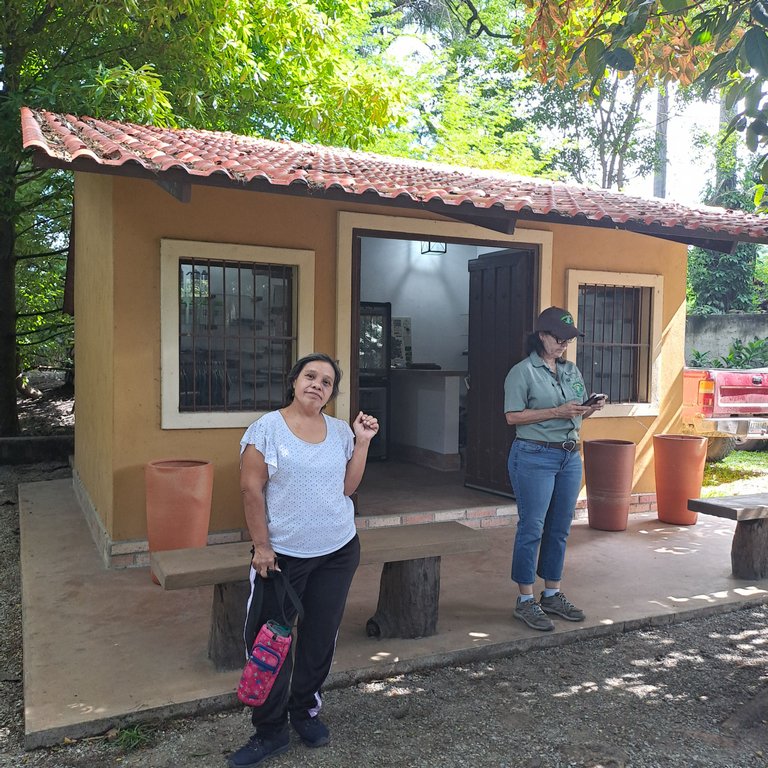
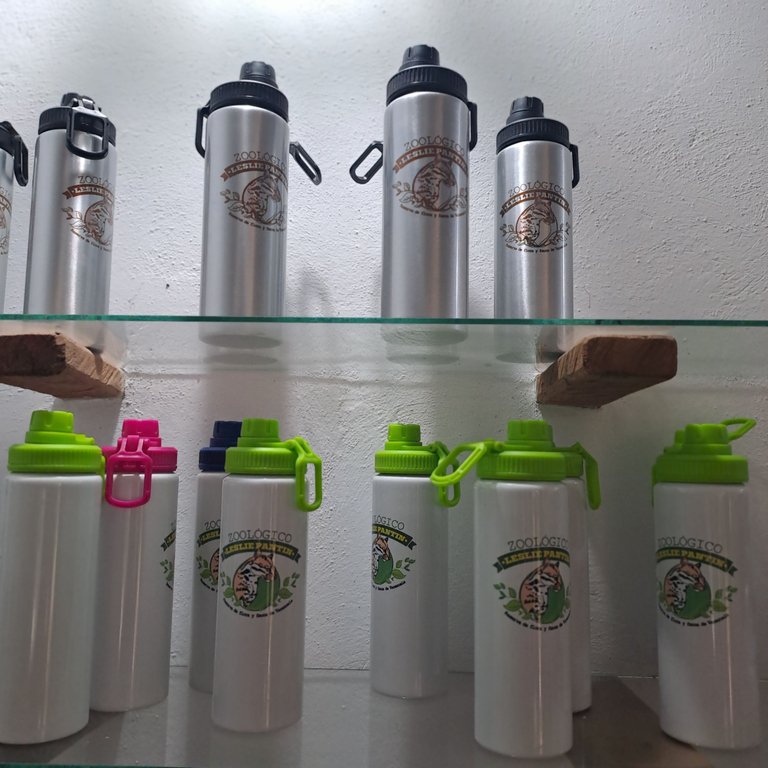




Informative talk and conservation programs
Once everyone who had reserved their ticket arrived, some in their trucks and others, like me, using public transportation, there were about 35 people in total, including children and adults. A talk was given by the three people who run the nature reserve, all members of the Pantin family. They explained the basic concepts I mentioned earlier about nature reserves and zoos, as well as talking about their origins and the importance of these centers for science. Among the instructions were not to give the animals candy or any unauthorized food and not to violate the safety zone.

There are several conservation programs, one of the most important being that of the Orinoco caiman, a species that is critically endangered, meaning that it is in danger of extinction. This is because in the last century, thousands were killed in a short period of time for the legal sale of their skins, as it was permitted by the government. However, without realizing it, they almost wiped out this species, which is endemic to the Orinoco basin, meaning that it only occurs in that part of the world.
During the visit, we were able to see an incubator for the eggs of this caiman, something I had never seen before. I had no idea that this device and method for animals even existed. In the incubator, the eggs are kept at the right temperature for the number of days necessary for them to hatch. I was also able to touch other eggs, which are of a regular size, larger than chicken eggs, of course, and have a rough texture, like sandpaper. These eggs were mostly empty shells, all of which were available to touch, meaning that nothing would hatch from them.
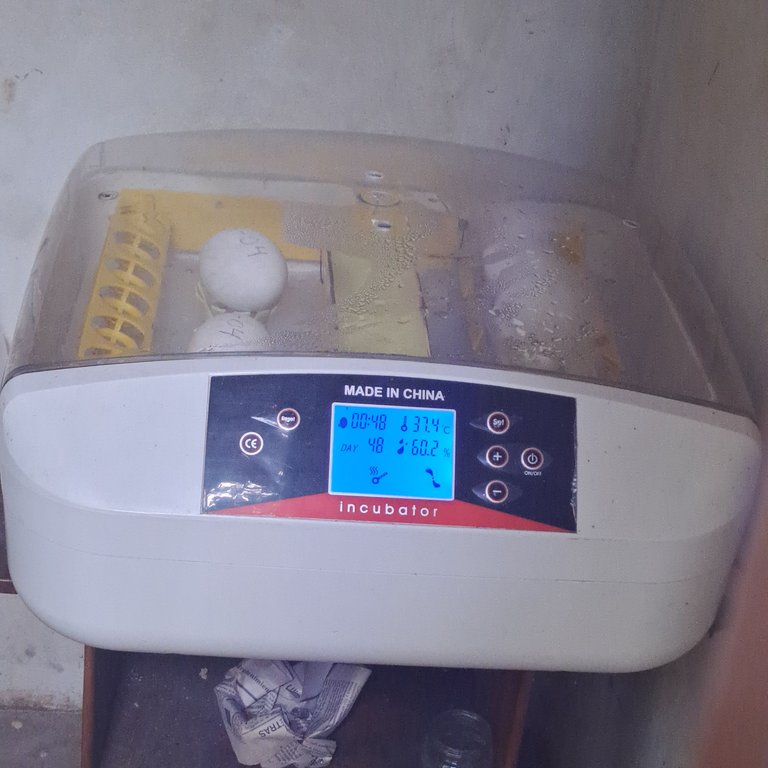
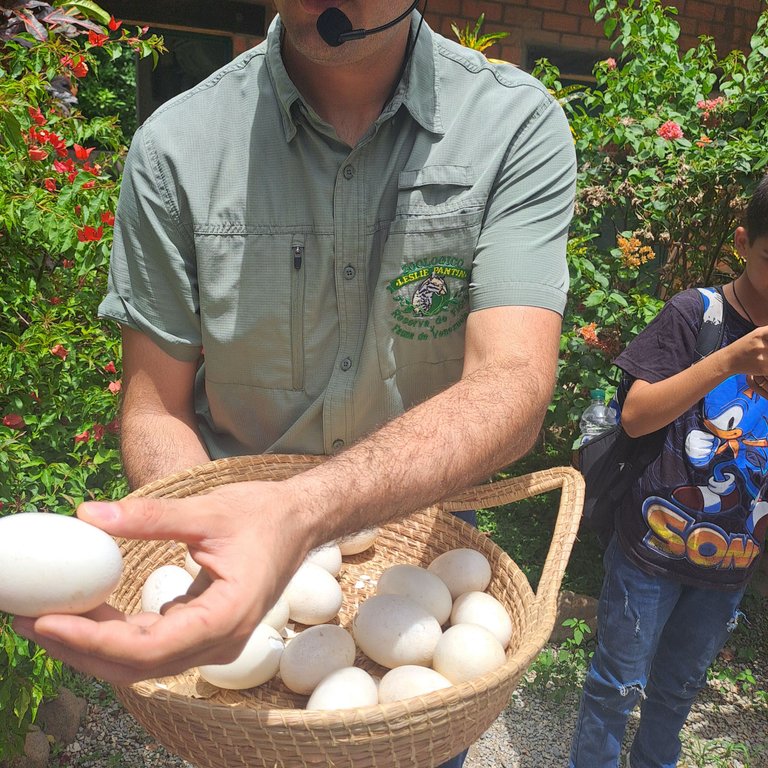
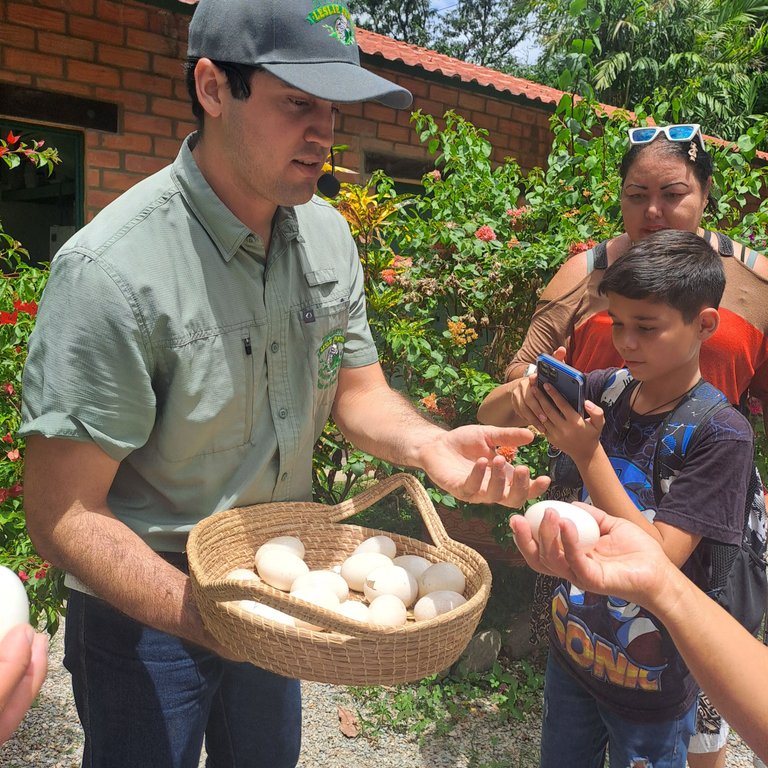
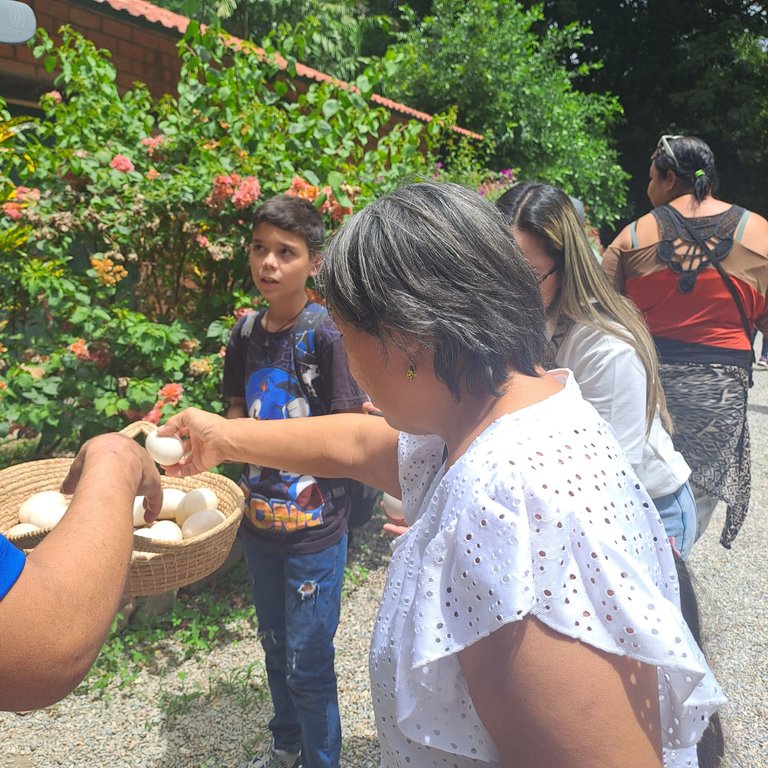
Once they hatch, they are separated into batches in tanks with clean water from a flowing river until they reach 1.20 cm. They are then weighed, measured, and labeled to be transferred to their new home, where they will be released to reproduce naturally. It is a fairly long process with many steps. I only mentioned what I could remember and learn.

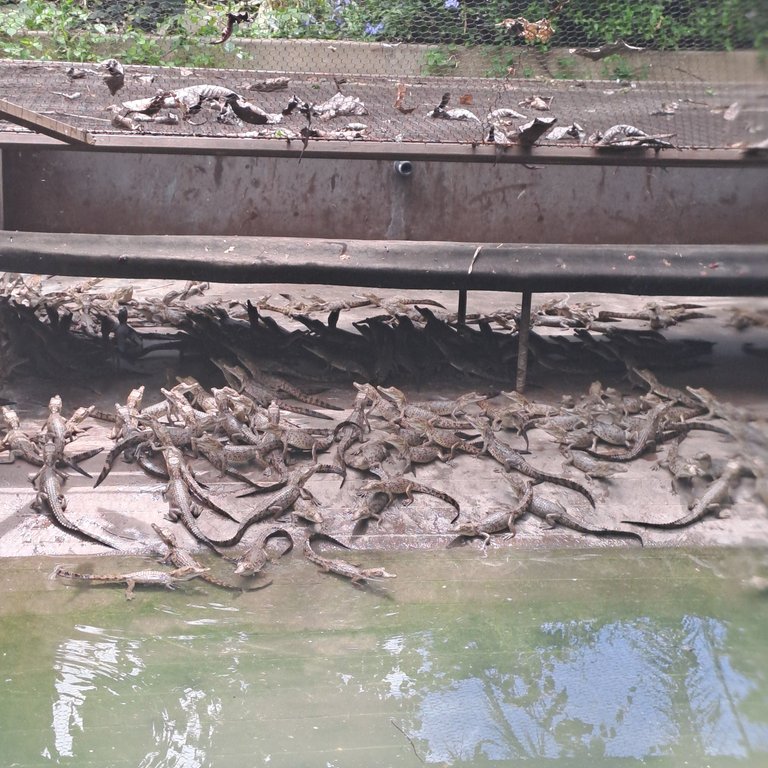
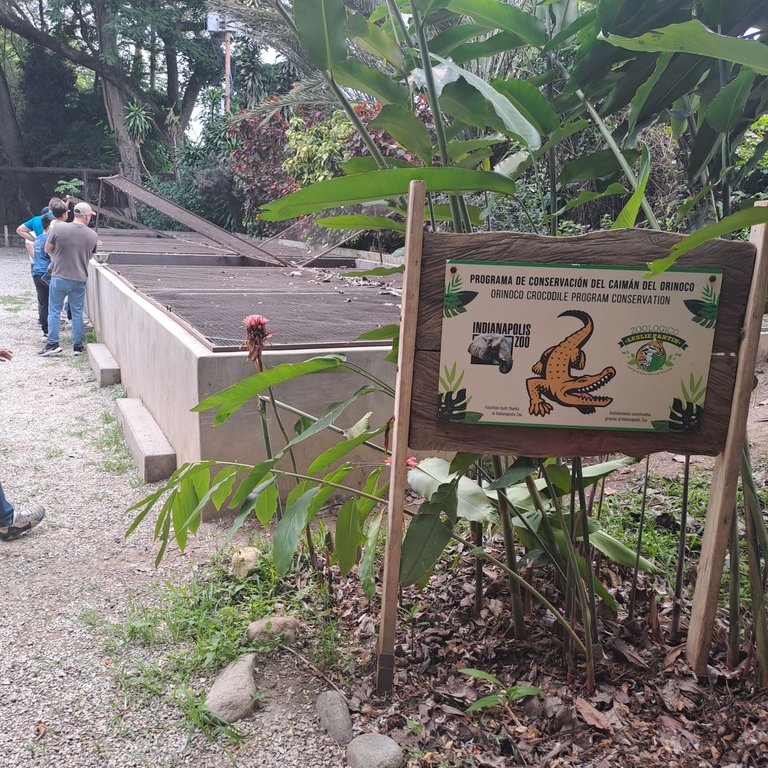
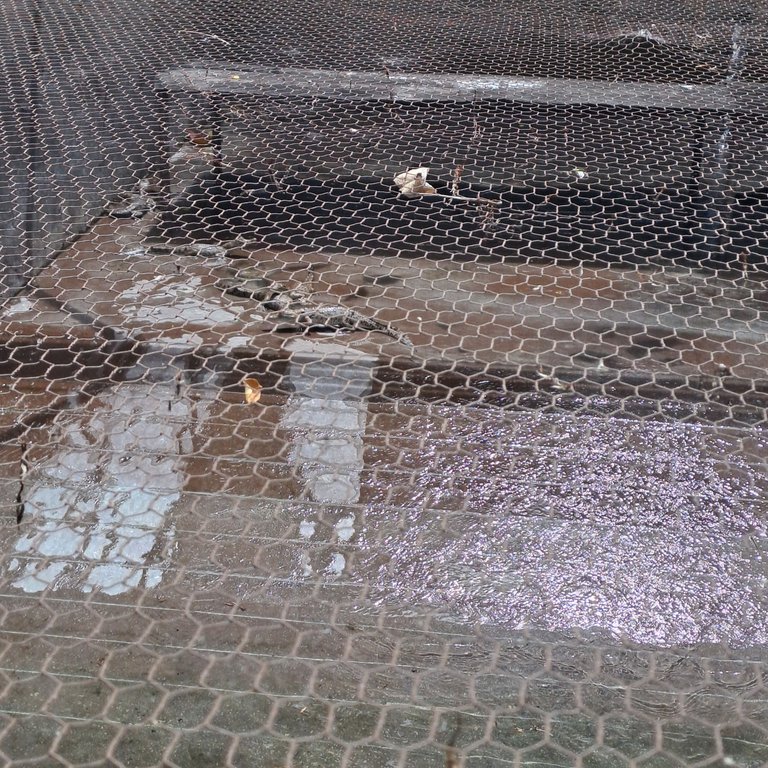


Venezuelan Cardinal Conservation Program
This is another program they carry out. The cardinal is a very important bird for Venezuela that is critically endangered, one step away from extinction. A few years ago, its image was used on the highest denomination banknote, the 100 bolívares note, to raise awareness and help people identify it, without confusing it with the cardinal that lives in Europe. The guide makes a joke and refers to the image of a Venezuelan baseball team that has a cardinal as its logo and insignia, but it is not the Venezuelan cardinal.
He explained that the cardinals they are breeding are fed a mixture of imported seeds, but in order to release them into their natural habitat, they have to grow the original plant that they feed on and get them used to eating it. These plants are grown in a greenhouse, so when they are released, they are more likely to survive.
These birds are small, and they are kept in a special place, like a house just for them. We couldn't go inside because they are very nervous animals and the noise and presence of humans can stress them out, even to the point of causing their death, even if we enter quietly. Another reason why entry is not allowed is that these are scientific projects and there are many safety protocols that must be followed. However, we were able to observe them through the glass, and they have a large space to enjoy. They are barely visible due to their characteristic red body and black head.
This reserve has other projects, but these are the most notable ones. As I have a lot to tell and show, I prefer to leave this introduction to the Leslie Pantin Nature Reserve here. See you in the comments.
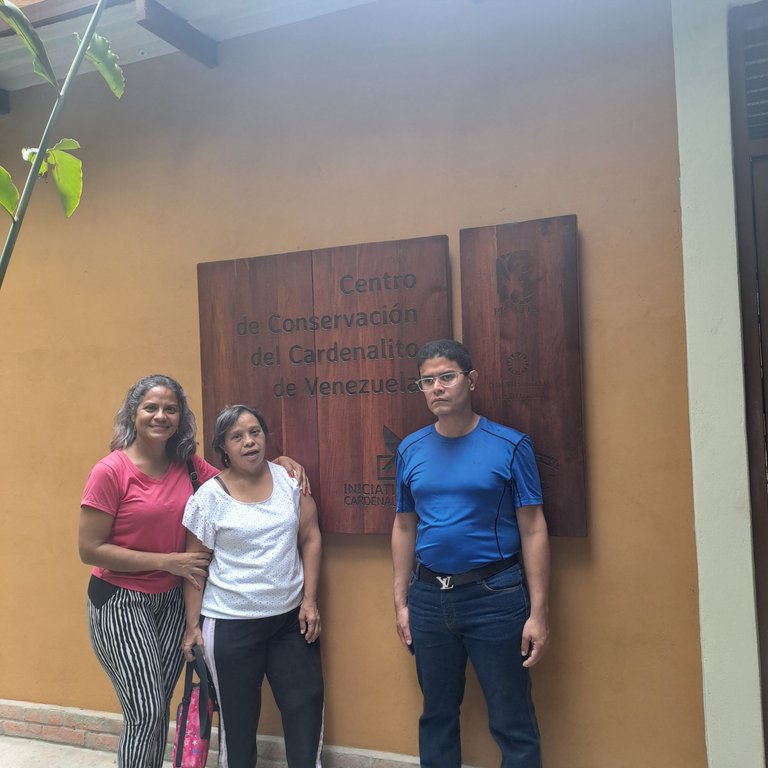
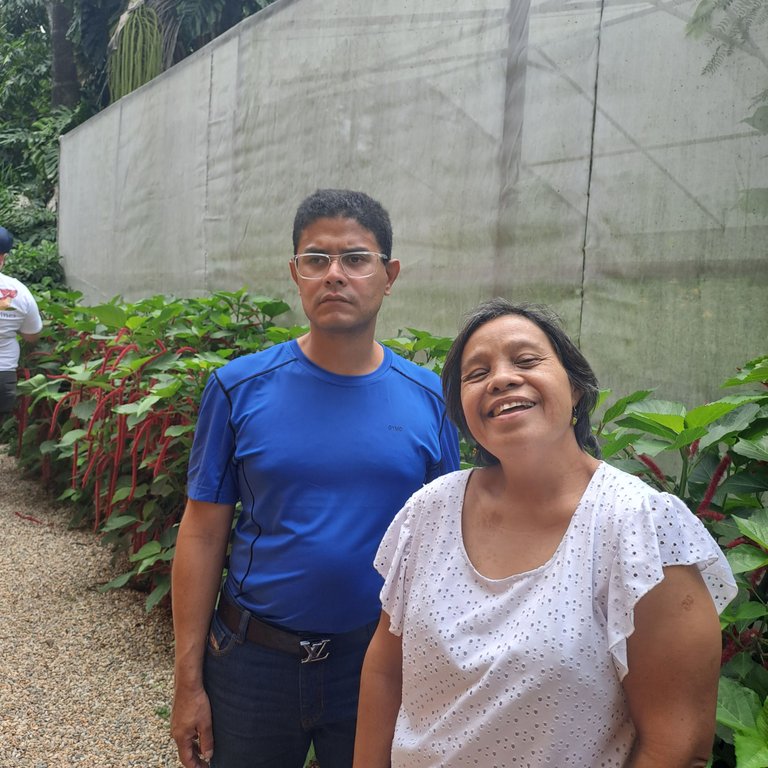
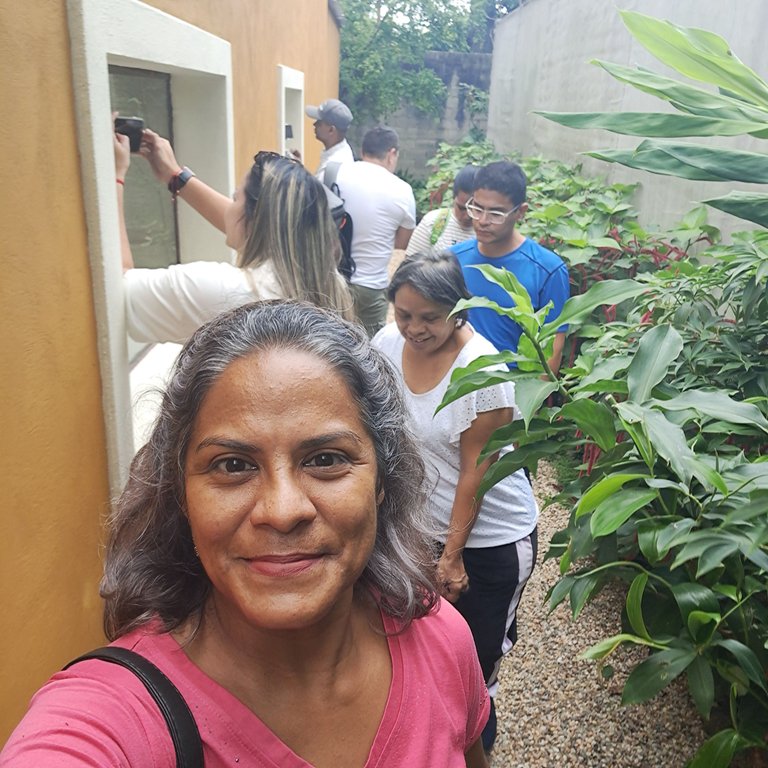

Did you know the difference between a zoo and a nature reserve?
Did you know about this reserve in Venezuela?
What did you think of the projects they are researching?

Visitando una reserva natural y aprendiendo sobre diversidad biológica
Zoológico Doctor Leslie Pantin

El mes pasado tuve un paseo muy especial, visité por primera vez una reserva natural que no es lo mismo que un zoológico, términos que aprendí a diferenciar ese mismo día, luego se los explicó. Todo comenzó con un video de TikTok que vio mi madre hace unas semanas, mi mamá que si tiene esa red social y yo no 🤣 me enseñó desde su celular este lugar, en el video mostraban animales exóticos y lo mejor de todo es que se encontraba muy cerca de donde vivimos, las dos muy asombradas no podíamos creer que existiera algo así en el municipio vecino, yo guarde la información y me prometí ir a conocerlo este año, pero días después mire por mi Instagram otra publicidad, donde mencionan que el 22 de mayo se celebraba el día internacional de la diversidad biológica y mi país Venezuela se encuentra en la séptima posición del país más megadiverso y por este motivo las entradas estaban casi a mitad de precio, no me pude resistir a esta promoción y decidí ir con mi tía y mi hermano, a conocer el zoológico Doctor Leslie Pantin.
Este zoológico y reserva natural solo abre sus puertas al público los días domingos, porque realizan una visita guiada de 3 horas aproximadamente, pero por ser una fecha especial el sábado estarían laborando, su horario de atención es de 10 am hasta la 1 pm porque tienen una visita guiada, después de ese tiempo las personas pueden almorzar o comer los alimentos y snack que lleven o compren en el mismo lugar por el tiempo que quieran, existen varios espacios con bancos para el disfrute y descanso de la caminata, además los árboles y los sonidos de las hojas y animales hacen que te sientas completamente relajado y conectado con el entorno, es un placer para los sentidos con los ojos cerrados o abiertos.

¿Zoológico o reserva natural?
Los zoológicos son lugares donde están diversos animales en cautiverio para su exhibición con el fin de recrear a los humanos. En mi infancia y adolescencia visitar a los zoológicos de mi país me dejaban un mal sabor de boca, terminaba muy triste incluso deprimida por semanas con la determinación de no regresar nunca, ahora siendo adulta tuve la oportunidad de conocer zoológicos en otros países, como Perú, México y Colombia y esos me dejaron mejores recuerdos y emociones. En los zoológicos los animales no tienen la infraestructura para ser felices, pero en las reservas naturales es otra cosa.
Los animales que están en una reserva natural es porque su existencia de alguna forma está en peligro, y el propósito de este lugar es proteger el ecosistema, conservar la vida natural y estudiar cada una de las especies en su entorno natural o las que allí habitan también educar a la población y sembrar conciencia del valor de estos animales para la naturaleza y el ecosistema en otras palabras para nosotros mismos.
En conclusión un zoológico es donde se exhiben los animales en cautiverio para recrearlos y una reserva natural es un área protegida donde los animales pueden prosperar en su hábitat natural para su estudio, preservación y concienciación social.
El zoológico Leslie Pantin, lleva su nombre porque además de ser una reseña natural también son un zoológico de animales autóctonos de la fauna venezolana con algunos ejemplares que viven en las mejores condiciones para su especie, aceptando animales rescatados que los mismos organismos de seguridad del Estado llevan y también personas que comprenden de tener una experiencia que los animales de la fauna silvestre no son para tener en el hogar ni domesticar.

Lugar de ubicación
Yo vivo en el centro de Venezuela, en el estado Aragua, en Cagua en el municipio Sucre, con un clima tropical de una temperatura promedio de 26 a 32 grados, en mi municipio hay muchos lugares de interés natural, la reserva queda a una hora en transporte público de donde vivo, ya que tuve que agarrar solo dos autobuses para llegar. El primero a una cuadra de mi casa y el segundo me dejó al frente de la reserva natural, específicamente en el municipio Mariño, en Turmero vía a Paya. Llegar a allí es muy fácil tanto en transporte público como en particular.
Origen de la reserva natural
Está construida en lo que fue en un principio una hacienda o casa de campo de la familia Pantin, fundado en 1963 por el doctor veterinario Leslie Pantin (fallecido) que era amante de la flora y fauna venezolana, hoy día esta reserva está a cargo de su hijo, nuera y nietos todos médicos veterinarios y biólogos.
Precio de la entrada
Para asistir a esta reserva natural hay que hacer una reservación primero, porque tienen un límite de cupos para la visita guiada, trabajan todos los domingos y sábados (ocasionalmente).
La visita es a las 10.00 am hasta la 1.00 pm aproximadamente (Único horario), el costo de las entradas es de:
- 10 $ adultos
- 8 $ niños (4 a 12 años)
- 8 $ Adultos mayores de 65 años Menores de 4 años no pagan.
Como mencioné anteriormente aproveche una promoción y cancele dos entradas de adultos a 6 $ cada una, para un total de 12 $ y mi tía como es una niña especial con síndrome de Down no paga 🥳 y salió gratis. En Venezuela las personas con discapacidad no cancelan entradas a parques o lugares de recreación y diversión.
La entrada Incluyó:
- Visita guiada, duración aproximada de 3.30 horas.
- Hidratación para todo el paseo.
- Comida (Zanahoria, auyama, cambur o zanahoria) para alimentar a los animales del ecosistema llanero.
- Estacionamiento privado.

Llegada al zoológico y primeras impresiones
El nombre del zoológico no es grande ni llamativo, todo lo contrario es pequeño y está prácticamente oculto entre las plantas de enredadera colocada en una tabla de madera sencilla se vislumbra las letras que forman su nombre.
Al entrar la naturaleza que desde afuera parece común me sorprendió y me dejó con la boca abierta, con un árbol enorme hermosamente cubierto con una enredadera que así como el mismo árbol sus hojas había crecido de forma impresionante, las fotos y video corto que tomé no le hacen mérito a su majestuosidad.
A pocos metros estaba una pequeña casita es la tienda de souvenir donde se pueden comprar varios artículos de vestir como franelas estampadas, gorras, sombreros, pañuelos y otros artículos como tazas, libretas, contigos, llaveros, juguetes y adornos con imágenes alusivas a los animales de la reserva.






Charla informativa y programas de conservación
Una vez que llegaron todas las personas que habían reservado su entrada, algunos llegaron en sus camionetas y otros como yo que usaron transporte público, en total había como 35 personas entre niños y adultos se inició una charla por parte de las tres personas que dirigen la reseña natural, todos miembros de la familia Pantin, allí nos explicaron los conceptos básicos que mencioné anteriormente sobre las reservas naturales y los zoológicos, además de hablarnos de su origen y la importancia para la ciencia de estos centros, entre las instrucciones estaban no darle dulces ni ningún alimento no autorizado a los animales, no violar el espacio de seguridad.

Los programas de conservación son varios, uno de los más importantes es el del caimán del Orinoco que es una especie que encuentra en estado crítico, lo que quiere decir que está en peligro de extinción, porque en el siglo pasado se mataban miles en poco tiempo para la venta de pieles de forma legal porque estaba permitido por el gobierno, pero sin darse cuenta casi acaban con esta especie que es endémica de la cuenca del Orinoco, es decir que solo se da en esa parte del mundo.
Durante la visita pudimos ver una incubadora de los huevos de este caimán, algo que por primera vez veía, ni siquiera tenía idea de que existía este aparato y método para los animales 😱, en la incubadora los huevos suelen estar en una temperatura adecuada y los días necesarios para su nacimiento. También pude tocar otros huevos y son de un tamaño regular, más grandes que los de una gallina por supuesto 😆 y su textura es rústica, como una lija, estos huevos eran cáscaras vacías en su mayoría, todos eran para ser tocados, lo que quiere decir que no nacería nada de ellos.




Una vez que nacen los separan por lotes en estanques con agua limpia de un río que circula, hasta que alcancen 1.20 cm y son pesados, medidos y etiquetados, para ser trasladados a su nuevo hogar, donde serán liberados con el fin de que se reproduzcan de forma natural. Es un proceso bastante largo con muchos pasos, solo mencionó lo que pude recordar y aprender.






Programa de conservación del cardenalito de Venezuela
Este es otro programa que llevan a cabo, el cardenalito es un pajarito muy importante para Venezuela que se encuentra en peligro crítico, a un paso de la extinción, hace unos años fue tomada su imagen como figura en el billete de más alta denominación, el de 100 bolívares para crear conciencia y que las personas puedan identificarlo, sin confundirlo con el cardenal que habita en Europa, el guía hace un chiste y toma de referencia la imagen de un equipo de beisbol venezolano que tienen un cardenal como logotipo e insignia, pero no es el cardenalito de Venezuela.
Nos explicó que los cardenalitos que están reproduciendo son alimentados con una mezcla de semillas importadas, pero para poder liberarlos en su zona de hábitat natural tienen que cultivar la plata original de la que ellos se alimentan, y los van acostumbrando a su consumo. Estas plantas están dentro de invernadero donde las cultivan y así cuando los liberan tienen más probabilidades de sobrevivir.
Estos pajaritos son pequeños, y los tienen en un lugar especial como una casa solo para ellos, no pudimos entrar porque son animales muy nerviosos y el ruido y la presencia de humanos los puede estresar, incluso hasta provocar su muerte, aunque entremos en silencio, otra razón por la que no se permite la entrada es que son proyectos científicos y tienen muchos protocolos de seguridad que hay que seguir; sin embargo, pudimos observarlos a través del vidrio y tienen un espacio amplio para su disfrute, apenas se ven por su color característico de cuerpo rojo y cabeza negra.
Esta reserva tienen otros proyectos, pero los más destacados son estos. Como tengo muchas cosas que contar y mostrar prefiero dejar hasta aquí esta introducción a la Reserva Natural Leslie Pantin, nos vemos en los comentarios.




¿Conocías la diferencia entre Zoológico y Reserva Natural?
¿Sabías de esta reserva en Venezuela?
¿Qué te parecieron los proyectos que están investigando?

Posted Using INLEO
You can check out this post and your own profile on the map. Be part of the Worldmappin Community and join our Discord Channel to get in touch with other travelers, ask questions or just be updated on our latest features.
Muchas gracias!!
¡De nada! Gracias por usar Worldmappin ❤️
Me encantan estos sitios, aquí había uno parecido llamado biocontacto, lo cerraron este año por problemas con los dueños del terreno, pero era algo muy parecido. No es igual a un zoológico, aquí los animales están en su hábitat natural, pero con personas cuidándolos y protegiéndolos. Que lindo paseo. El caimán me da miedo, pero veo que hay muchos bebes y lo de los huevos es muy interesante. Gracias por compartir este interesante viaje con tu familia.
Que lástima que cerrarán el que mencionas, este tiene muchas personas trabajando y considero que estan creciendo porque difunden lo que hacen en las redes sociales con responsabilidad sobre la reserva natural.
Tienen muchos tanques de cemento, esos que se ven en las fotos detras del cartel, son los criaderos de caiman, ellos tienen ese proyecto piloto y son los que estan criando para todo el pais prácticamente y también esta el del cardenalito.
No es nada fácil recuperar una especie en estado crítico, lleva mucho trabajo, esfuerzo y tiempo. Gracias por tu apoyo @doriangel 🥰
!discovery 30
This post was shared and voted inside the discord by the curators team of discovery-it
Join our Community and follow our Curation Trail
Discovery-it is also a Witness, vote for us here
Delegate to us for passive income. Check our 80% fee-back Program
Un trabajo loable el de tener espacios para rescatar y reproducir animales en peligro de extinción. Qué bonito que todavía hayan personas que le den importancia a eso a pesar de la situación del país.
Los caimancitos se ven lindos chiquitos, ya luego ni que me lo enseñen en fotos, jaja.
Bien decía mi abuela, todo chiquito es bonito al crecer uno se pone feo. 😅.
Los caimánes bebes son preciosos, yo quería tocar uno pero no nos dejaron.
Yo quedé impresionada por ese lugar, esta bien organizado y con protocolos porque son cosas científicas. También me impresionó que quedara relativamente cerca de donde vivó 😱 fue toda una experiencia 😉